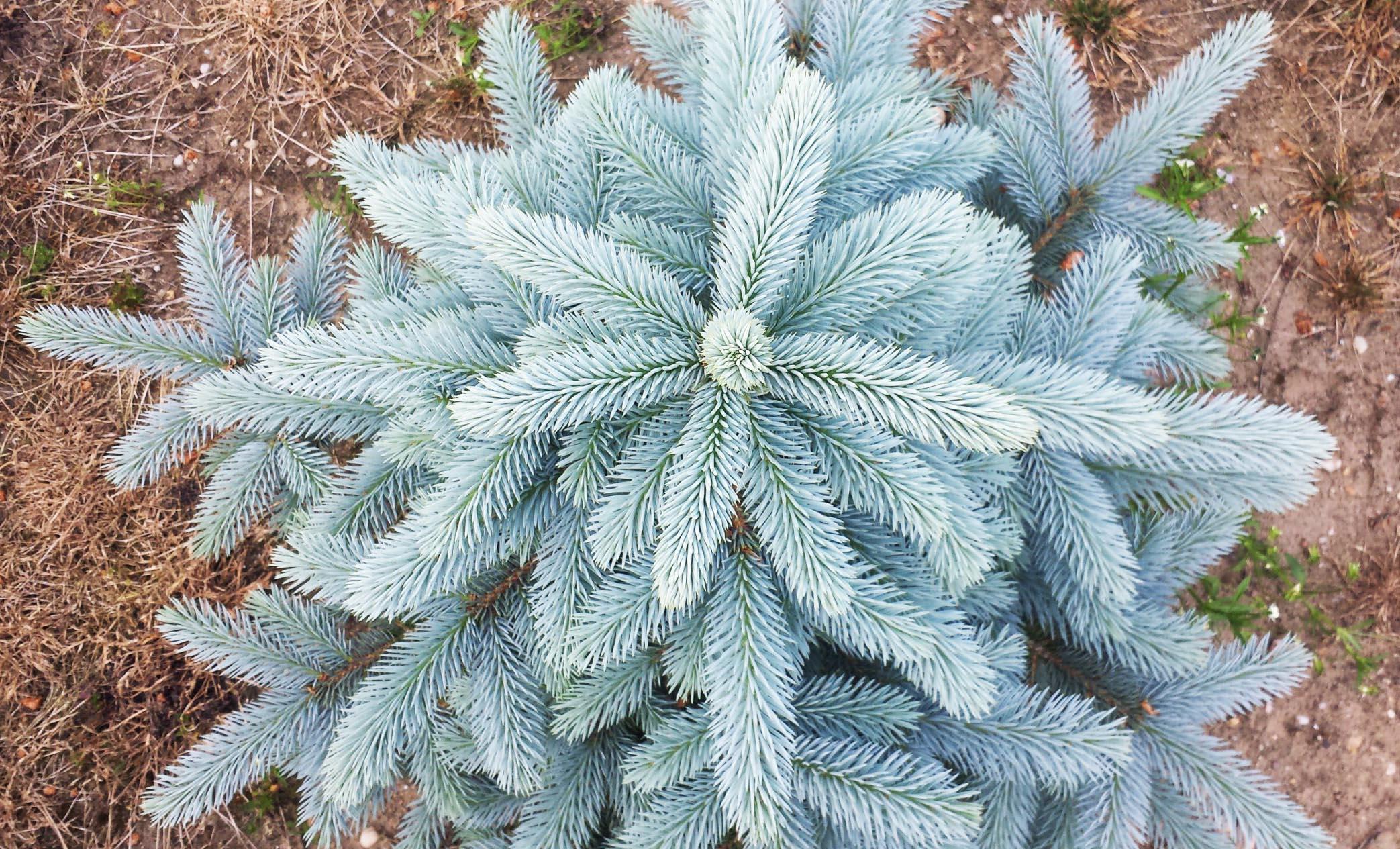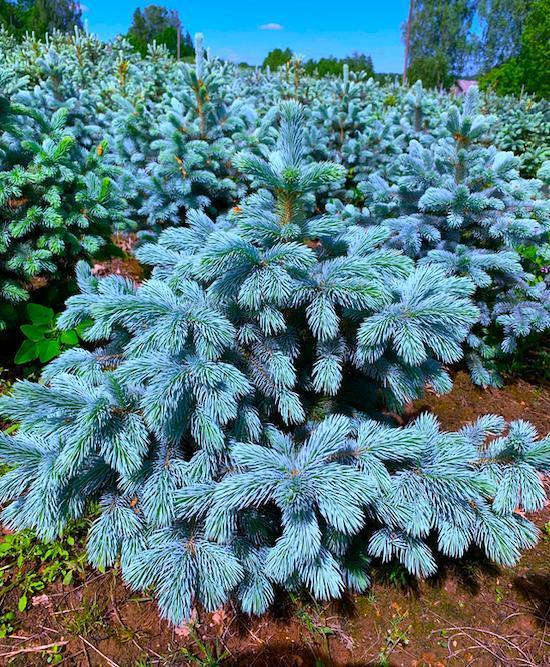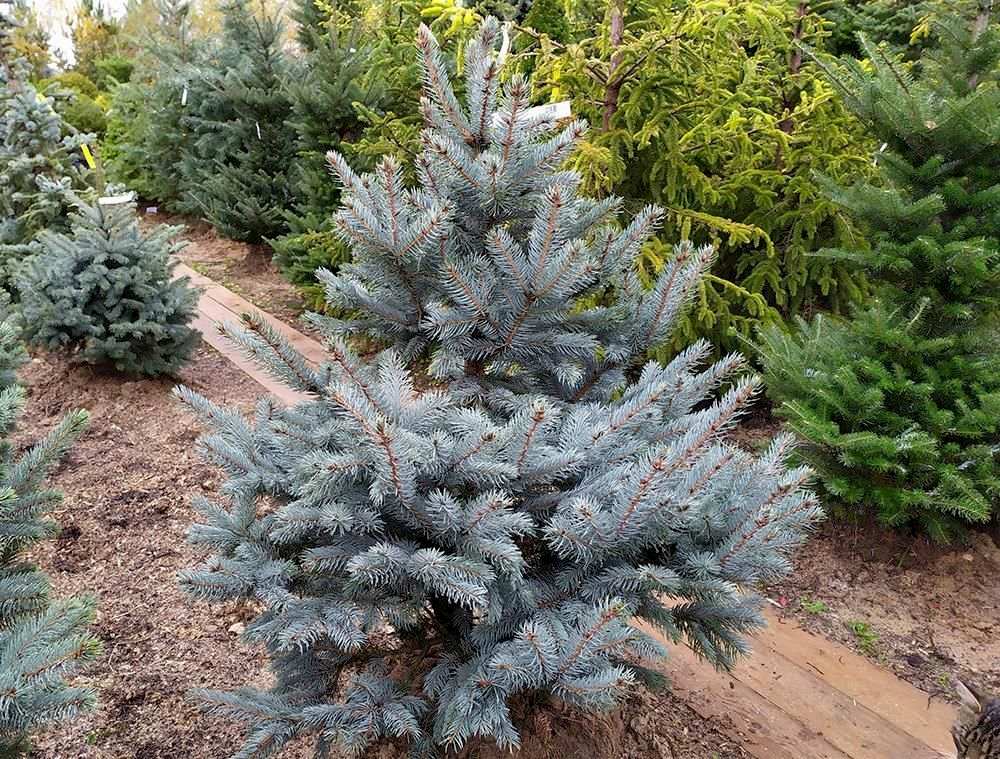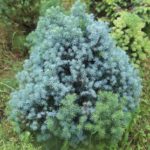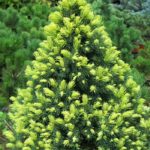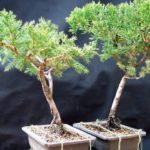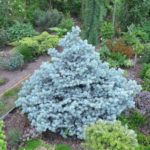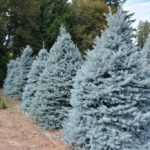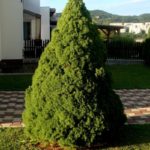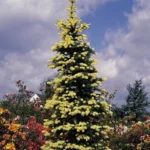Super Blue spruce is a large, straight tree. It has a beautiful conical crown and an unusual blue color. This plant has excellent decorative properties throughout the year - both winter and summer. For crop cultivation to be successful, it is important to carry out planting work correctly and provide the plant with quality care.
Description
The plant is often used in landscape design. This is due to the high decorative value of trees.
Origin
This tree originates from the southwestern regions of North America.It is found in rocky areas and is called Picea pungens Super Blue Seedling. Moreover, “Picea pungens” is translated as “prickly spruce.” The phrase “Super Blue Seedling” means “super blue seedling.”
Spruce Super Blue Seedling is the result of the work of breeders from Canadian nurseries. The plant was bred by seed, and not by grafting. Due to this, it was possible to reduce the cost of the crop compared to other types of spruce.
Features of the variety
Distinctive features of the prickly spruce are its slimness and dense crown of rich color. The variety takes pride of place among conifers. This is due to its attractive appearance.
This plant has a small trunk, which is covered with thin light brown bark. The crown is characterized by a tiered structure. This is achieved through the horizontal placement of branches. As the trees grow, the shape of the crown becomes cylindrical and acquires a richer and deeper color.
The needles of the plant are presented in the form of sharp, hard needles, which are distinguished by their diamond shape. Their length reaches 3 centimeters. The shade depends on the growing conditions. It can be green, bright blue or gray.
Spruce of this variety is characterized by resinous cones up to 10 centimeters in size. Young fruits have a reddish tint. At maturity they turn brown. Under the lamellar scales there are seeds. Their size is 3-4 millimeters.
Dimensions
Super Blue spruce grows very quickly. Over the course of a year, it increases by more than 30 centimeters in height and 15 centimeters in width.By the age of 30, the plant grows to 15 meters.
Weather dependent
An important condition for full development is growing the crop in an open and sunny area. You can also choose slightly shaded areas for planting blue spruce. The crown of the crop comes in different colors. Due to lack of sun, it loses its bright blue color and turns green.
Super Blue spruce should not be planted in places where potatoes or corn were previously grown. Otherwise, there is a risk of increasing the likelihood of fungal pathologies. The plant is considered unpretentious and can grow in almost any soil. However, the best option would be loam or sandy-gravel soil. Spruce feels great in light and loose soil. At the same time, its acidity should be 4.5-5.8.
Spruce of this variety is characterized by a high degree of resistance to low temperatures. It can withstand temperatures down to -35 degrees.
Threats to the plant
If the plant is not properly cared for, there is a risk of it being damaged by diseases and parasites. To save culture, you need to detect the problem in time and take measures to solve it.
Common pathologies encountered by Super Blue spruce include the following:
- Rust - in this case, the branches of the affected plant become covered with swellings and spots of red color. Bordeaux mixture helps cure the tree. For 1 bucket of water you need to take 10 grams of the substance. Branches affected by the disease need to be pruned.
- Schutte is a fungal disease that causes brown spots to appear on the plant. For preventive treatments it is worth using Bordeaux mixture. It should be used in spring and summer.
Among the pests, spruce suffers from the following insects:
- Spruce hermes are a type of aphid. She settles in the lower part of the culture.In appearance, the pests resemble white cotton wool.
- Spider mites - when a crop is damaged, the needles become yellow in color.
- Spruce sawfly - in this case, spots resembling burns appear on young shoots.
How to plant a spruce
In order for the Super Blue spruce to better adapt to a new place after planting, it is recommended to follow these instructions:
- Planting work should be carried out in April and May.
- First you need to prepare a hole for planting. Its size can be 50-80 centimeters - specific parameters are determined by the size of the root system.
- When planting several seedlings, the minimum interval between them should be 2 meters.
- It is worth placing a drainage layer at the bottom of the hole. Crushed stone or crushed brick is suitable for this.
- The hole must be filled with soil mixture. To prepare it, you need to mix sand, turf soil and peat.
- Place the seedling in the center of the hole and carefully straighten its root system.
- Fill the hole with soil in such a way as to avoid the formation of voids.
- Make a hole around the seedling and water the plant generously.
To avoid rapid evaporation of moisture, it is recommended to cover the surface with a mulch layer. For this you should use peat.
How to care for her
Super Blue spruce is considered an unpretentious plant. However, you still need to adhere to certain recommendations:
- Water the crop on time. An adult tree needs to be moistened no more than once a month. During periods of drought, the frequency of watering is increased. The seasonal factor is of no small importance.You should not start watering the spruce immediately after the snow melts. The soil will remain fairly moist for some time. In this case, at the end of August, frequent watering should be stopped. The tree must adapt to the onset of winter. The last time the tree needs to be watered abundantly is in October.
- Loosen and mulch the soil. Thanks to the use of mulch, it is possible to retain moisture in the soil and limit its evaporation. In addition, this procedure prevents the development of weeds.
- Prepare the plant for the ground. To begin with, the tree needs to be watered abundantly in October. If there is a lack of moisture, the needles will dry out and partially fall off. To prevent the branches of a young seedling from breaking, a cone-shaped sheathing needs to be made around the tree. It is worth stretching agrofibre on top of it. Mature trees do not require such protection. If there are a lot of rodents in the area that eat tree bark, you need to make a fence.
- Trim the plant. In winter, sanitary pruning is required. To do this, you need to remove dry and broken branches. Shaping trimming is usually not performed. The spruce itself maintains its cone-shaped shape.
Reproduction
Spruce can be propagated in different ways - by seeds, cuttings or grafting. Each method has certain characteristics.
Through seeds
When growing Picea Pungens spruce with seeds, it is worth considering that approximately half of them will not germinate. Moreover, 8 out of 10 seedlings will not have blue needles.
To propagate spruce by seeds, after the cones dry out, you need to remove the seed material from them. It is recommended to do this several months before planting. Before sowing, seeds must be disinfected.After which they need to be planted in small pots and the surface of the substrate covered with a thick layer of peat and sawdust.
The first shoots will appear in about 1.5 weeks. From the seedlings you need to choose those that have a blue color. They must be systematically sprayed with a spray bottle. This should be done twice a day. Seedlings are planted in open ground after they reach three years of age.
Through cuttings
Cuttings should be harvested in April and May. In this case, you should choose a tree that is 5 years old. The maximum size of cuttings reaches 12 centimeters. In this case, they are taken with a piece of bark.
Through vaccinations
This method is used extremely rarely, since it requires certain skills from the gardener. To carry out the procedure, you need to take a conifer seedling, onto which the desired variety will be grafted.
Super Blue spruce is a fairly common plant that has excellent decorative properties. In order for a culture to grow and develop normally, it needs to be provided with quality care.

